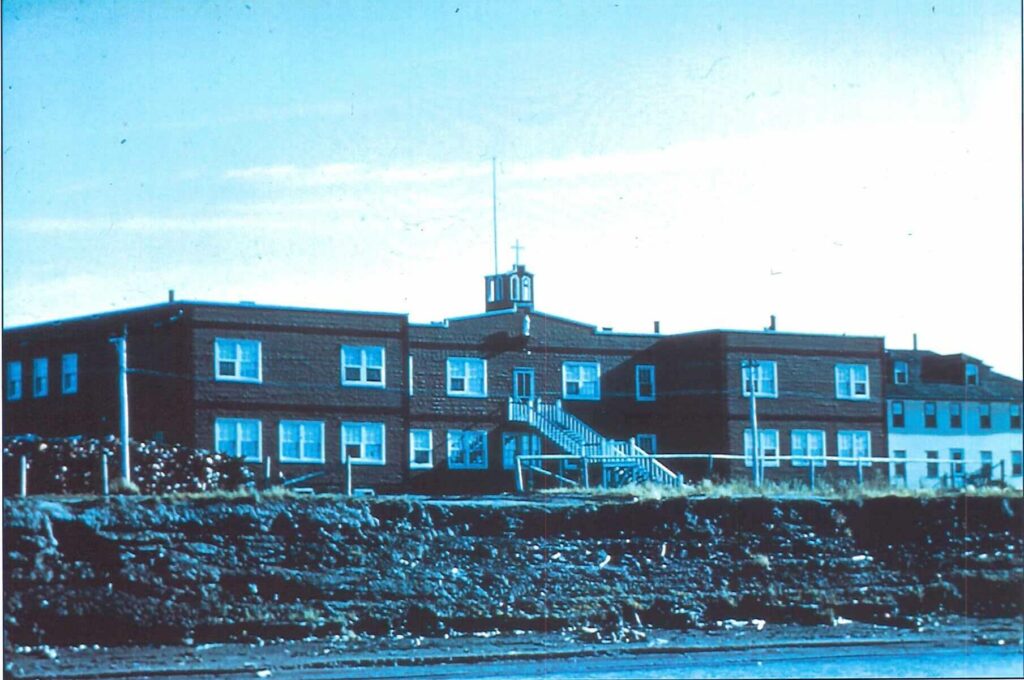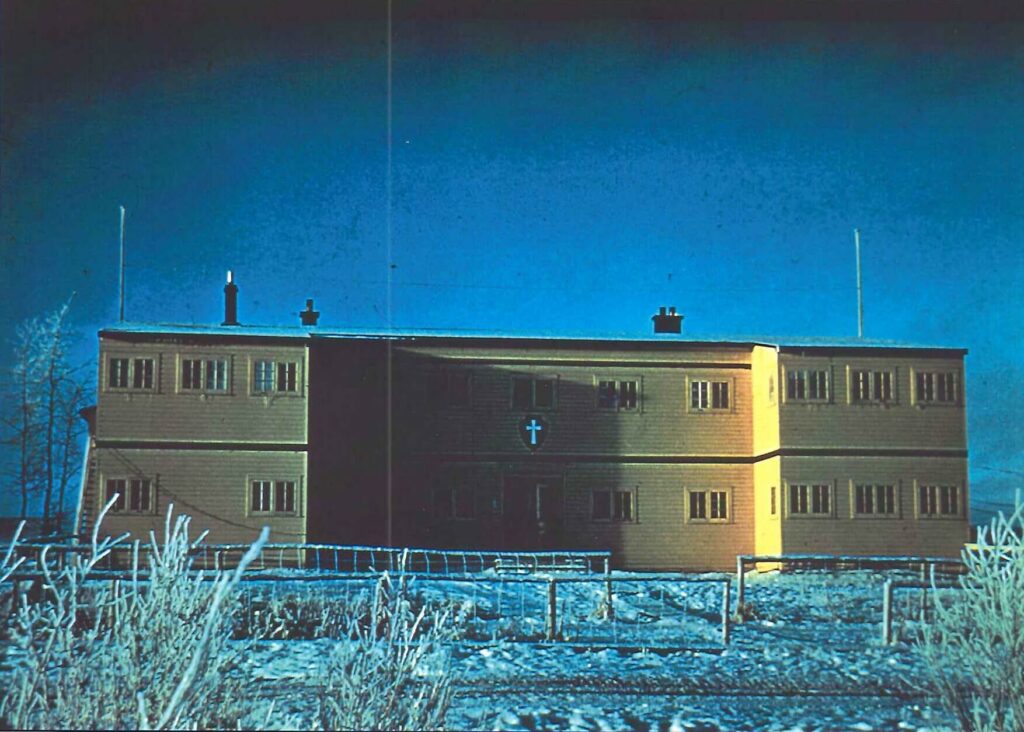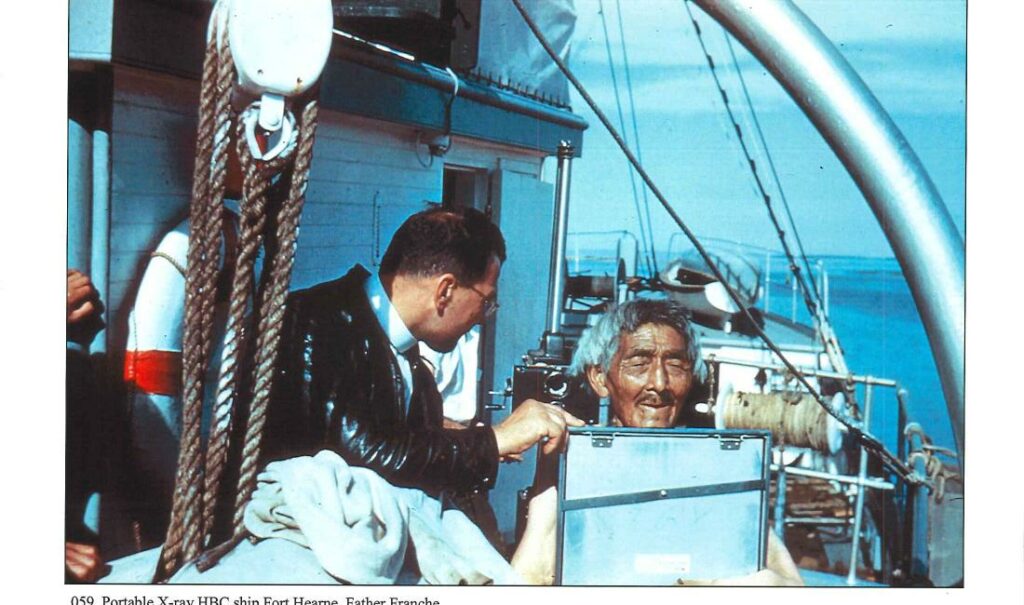History
Inuvialuit and the Tuberculosis Epidemic
The impact of the Tuberculosis Epidemic (1940s to 1960s) on Inuit was devastating. In the 1950s, as much as one-third of the Inuit population was sick with Tuberculosis (TB). Due to a lack of medical facilities in the North, many Inuvialuit and Inuit were sent south for treatment. The average stay for a patient in a southern sanitorium averaged 2.5 years.
The Tuberculosis Epidemic took a heavy toll on Inuvialuit. Those afflicted with the deadly disease were often sent south for treatment. Many would never return and little to no information was ever sent back home to families.
Inuvialuit living in the Inuvialuit Settlement Region were affected by Tuberculosis as early as the 1920s, according to files from the Anglican Church of Canada and Roman Catholic Archdiocese of the Mackenzie.

Inuvialuit who got sick with Tuberculosis while living in Aklavik, in outlying communities or on the land in “bush” camps were sent to the All Saints Anglican Hospital and the Roman Catholic Hospital in Aklavik. Many Inuvialuit died of their illnesses and they were buried in the Anglican or Roman Catholic graveyards in Aklavik.

From the 1940s to the 1960s, many Inuvialuit were sent south to Edmonton, Alberta for treatment and never returned home. One of the hospitals that received and treated patients from the Inuvialuit Settlement Region was the Charles Camsell (Indian) Hospital. There is a cairn at the City of St. Albert Cemetery that identifies 98 patients who died from Tuberculosis at the Charles Camsell Hospital, which includes their home community and their age when they passed away. Those commemorated on the cairn include Inuvialuit patients, along with names from the NWT, Yukon and Alberta. Some patients were sent to other hospitals in Alberta, Manitoba or Ontario.
Due to many socio-economic factors, Tuberculosis rates among Inuit is as much as 270 times higher than it is with the non-Indigenous Canadian-born population. In response, Inuit organizations recently partnered with the Government of Canada on a Tuberculosis Task Force. Inuit Tapiriit Kanatami and the Government of Canada have committed to reduce the TB rate by 50 percent across Inuit Nunangat by the year 2025 and to eliminate it completely by 2030.
Click the below video links to find out more about the Charles Camsell Hospital:
